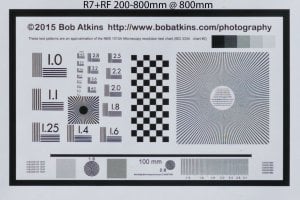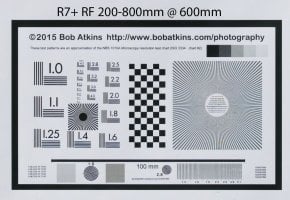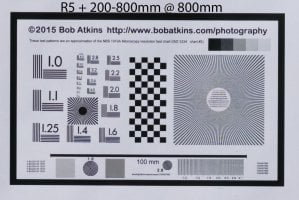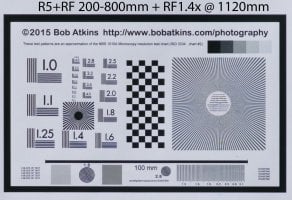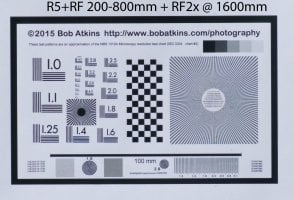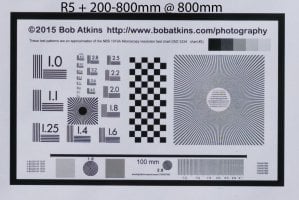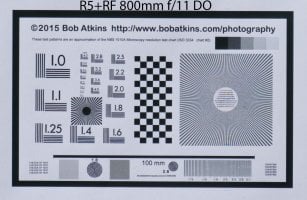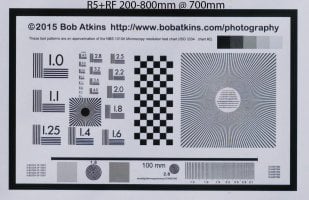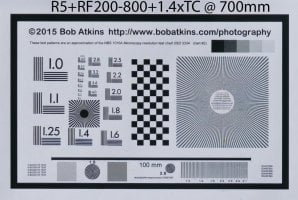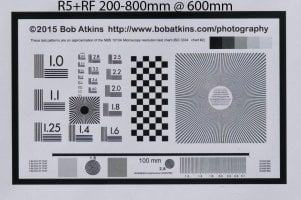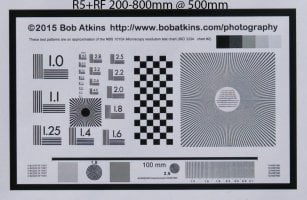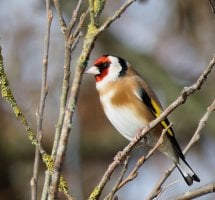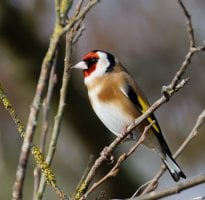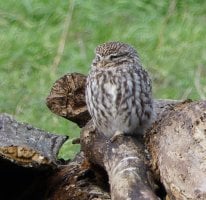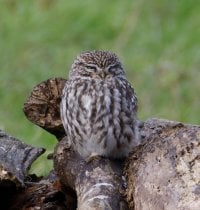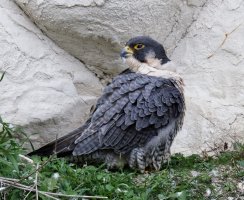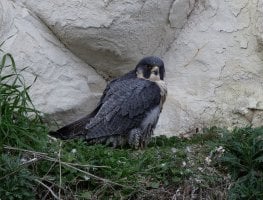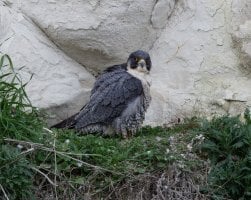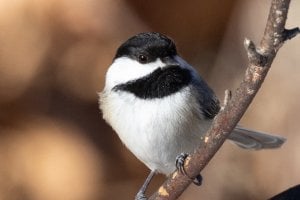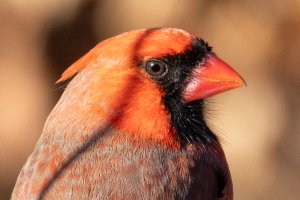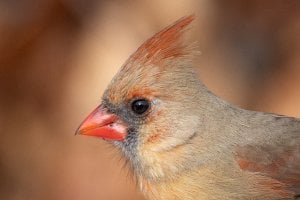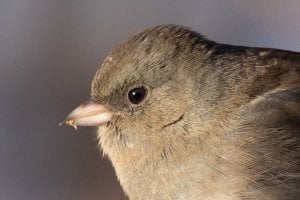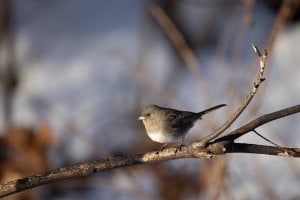I have now taken a couple of thousand images with charts and birds in the wild to test the RF 200-800mm on the R5 and some on the R7. This was both from sheer interest and for me to decide whether to keep the lens and if so which lens to use in various circumstances. Much has been posted in two threads: https://www.canonrumors.com/forum/threads/rf-200-800mm-500mm-vs-800mm-etc-with-birds.43235/ and https://www.canonrumors.com/forum/t...-rf-100-500mm-vs-rf-800mm-on-r7-and-r5.43183/
After another 1000 shots in the past two days, comparing with the RF 800mm f/11 and with extenders, here is a brief, final summary of results with the R5.
At 500mm, it is as sharp as the RF100-500mm, and this outstanding sharpness continues through to about 600mm. The resolution of the lens increases until about 650mm, where it levels off at about 1.4x the resolution of the lens at 500mm (or the RF 100-500mm). This means in practice that you won’t resolve any more detail, like patterns of feathers, after zooming in to more than 650mm or so but you will see very small continuous objects, like the numbers in my charts, more clearly with less pixellation. Several reports have the lens somewhat soft at 800mm. This is true in that it is not revealing 800mm’s worth of data and it does need more sharpening. But, to put this in perspective, I find the lens at 800mm slightly sharper than the RF 800mm f/11, which is rated by opticallimits using Imatest as “Very Good” on the R5 and “Excellent” at 30 Mpx.
Adding the RF 1.4xTC to give 1120mm, hardly increases resolution, ~ 10%, with poorer AF. The RF 2xTC gives up to 25% extra resolution, with less accurate AF and a lot of sharpening required. Many more pixels are put in the subject and small objects can show up much more clearly.
As I have posted in the other threads, the AF at 800mm is relatively slow and not up to fast birds in flight. Zooming out to 500 or 600mm does transform it into a useful fast focussing lens. You don’t have to use this lens at 800mm. I suspect when the comparisons are done, it will be found to be as good as the excellent Sony 200-600mm where they overlap, with the bonus of an extra 200mm thrown in, probably better than a TC.
I am keeping it to complement my RF 100-500mm. The smaller lens is less tiring to carry and to hand hold, better for close-up shots, and of a very convenient size for packing for flights. And, I suspect it is more useful and better for BIF. 100-500mm is good enough for most of my needs. However, 800mm has proved useful in the past for distant birds.
Here are the latest charts. They are all taken at 16.7m and are 100% crops. They are just laser printed on standard A4 paper (in portrait orientation), not professional ones, and are stuck to the wall of my house, illuminated by a grey sky.
After another 1000 shots in the past two days, comparing with the RF 800mm f/11 and with extenders, here is a brief, final summary of results with the R5.
At 500mm, it is as sharp as the RF100-500mm, and this outstanding sharpness continues through to about 600mm. The resolution of the lens increases until about 650mm, where it levels off at about 1.4x the resolution of the lens at 500mm (or the RF 100-500mm). This means in practice that you won’t resolve any more detail, like patterns of feathers, after zooming in to more than 650mm or so but you will see very small continuous objects, like the numbers in my charts, more clearly with less pixellation. Several reports have the lens somewhat soft at 800mm. This is true in that it is not revealing 800mm’s worth of data and it does need more sharpening. But, to put this in perspective, I find the lens at 800mm slightly sharper than the RF 800mm f/11, which is rated by opticallimits using Imatest as “Very Good” on the R5 and “Excellent” at 30 Mpx.
Adding the RF 1.4xTC to give 1120mm, hardly increases resolution, ~ 10%, with poorer AF. The RF 2xTC gives up to 25% extra resolution, with less accurate AF and a lot of sharpening required. Many more pixels are put in the subject and small objects can show up much more clearly.
As I have posted in the other threads, the AF at 800mm is relatively slow and not up to fast birds in flight. Zooming out to 500 or 600mm does transform it into a useful fast focussing lens. You don’t have to use this lens at 800mm. I suspect when the comparisons are done, it will be found to be as good as the excellent Sony 200-600mm where they overlap, with the bonus of an extra 200mm thrown in, probably better than a TC.
I am keeping it to complement my RF 100-500mm. The smaller lens is less tiring to carry and to hand hold, better for close-up shots, and of a very convenient size for packing for flights. And, I suspect it is more useful and better for BIF. 100-500mm is good enough for most of my needs. However, 800mm has proved useful in the past for distant birds.
Here are the latest charts. They are all taken at 16.7m and are 100% crops. They are just laser printed on standard A4 paper (in portrait orientation), not professional ones, and are stuck to the wall of my house, illuminated by a grey sky.

